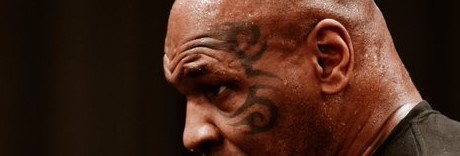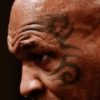Louis-Conn II: A Heavyweight Title Fight Comes To Television
By: Sean Crose
For those who don’t know, Joe Louis was one of the greatest heavyweight champions of all time. What’s more, he was one of the greatest boxers of all time. Believe it or not, these are facts that few fight analysts and/or historians will ever argue against (boxing know-it-alls are a traditionally ornery bunch). As in the case of Ali (and precious few others) Louis’ greatness is pretty much universally accepted. Just how good was the guy? Well, from the year 1936 to the year 1950, the man didn’t lose a single fight. Not. A. Single. Fight. Oh, and he had well over thirty bouts during that time span.

Jack Sharkey, James Braddock, Max Baer, Max Schmeling, and Joe Walcott were just some of the notables Louis met and bested during his notable run. Impressive stuff for a man widely known for taking out one no-hoper after another (for a while, Louis’ competition was known as “the bum of the month club”). Yet, while Louis is rightly regarded as one of the most dominant boxers to ever slip on a pair of gloves, there were men out there known to present the guy with a challenge. Schmeling beat him the first time they met. Walcott gave him almost more than he could handle. Even the over the top “Two Ton” Tony Galento had Louis briefly taste the mat.
One fighter that gave Louis more trouble than the man could have possibly imagined, though, was Billy Conn. A product of Pittsburgh, Conn had a less than terrific start as a boxer, before finally getting the hang of things and collecting a whole lot of wins for himself. After winning and defending the light heavyweight title, however, Conn decided to go for greatness and take on Louis for the heavyweight championship of the world. It was a bold and daring move. Louis wasn’t just any heavyweight, after all. And besides, moving up to take the biggest prize in sports against a bigger man (Louis would outweigh Conn by at least twenty pounds)was a daunting challenge in and of itself.
Yet Conn almost pulled it off. Meeting Louis at New York’s Polo Grounds on the evening of June 18th, 1941, Conn employed incredible boxing skills to frustrate Louis and avoid the impact of the champions’ frightening power punches. Not only was Conn proving to be the great Louis’ equal – he was handily beating the man. Then came the thirteenth round. The slick, slippery Conn decided to play tough guy after surprisingly hurting his opponent. Yet the results of Conn’s hubris were entirely predictable…Louis ended up winning by knockout that very round. The story, however, wasn’t over. After the Second World War, which saw both Conn and Louis serving in the military, the two fighters were to meet again, on June 19th, 1946, at Yankee Stadium.
A lot of time passed since the first fight, however, and the world had changed in incredibly dramatic ways. The United States, previously seen as a kind of marginalized, movie making nation where poor people were apt to move, was, as a result of the war, now the world’s great power, deeply engaged in a “cold war” with the Soviet Union for the direction of civilization (hard to believe, but true). What’s more, American life itself had changed since Louis and Conn had first squared off. Television, which had been around for years, was about to really take hold with the American public. And boxing was to become one of the young medium’s prime attractions.
And what better way to bring boxing to tv fans than to broadcast a live rematch between the great “Brown Bomber” and his slippery foe?
Unfortunately, the second fight wasn’t nearly as thrilling as the first. “He can run, but he can’t hide,” Louis claimed beforehand, in perhaps the first utterance from a fighter that absorbed itself into everyday language. Louis was right. He was able to end Conn’s second attempt at glory in the eighth round. Conn’s big moment had passed, having slipped into the vapor of time half a decade and a full historical era earlier. Still, the rematch between Louis and Conn served it’s purpose, bringing a heavyweight title fight to a groundbreaking new medium. Make no mistake about it, boxing is still living in the shadow of that long ago night in New York








